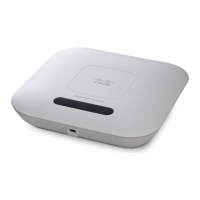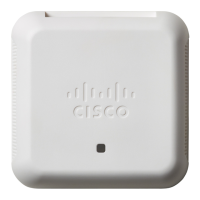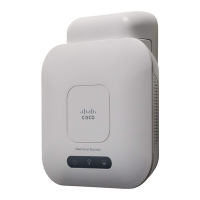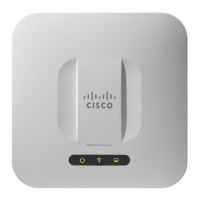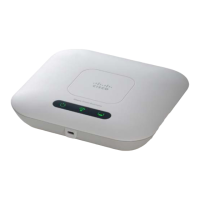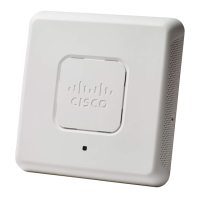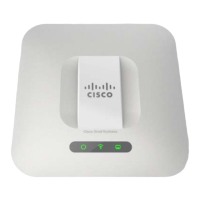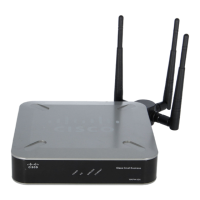the WAP device inspects the frame and checks the ACL rules against the content of the frame. If any of the
rules match the content, a permit or deny action is taken on the frame.
Workflow to Configure ACLs
Use the ACL Rule(s) to configure the ACLs, and then apply the rules to a specified interface.
To configure the ACLs follow these steps:
Step 1
Select Access Control > ACL.
Step 2
In the ACL Table, click ✚ to add a new row and create an ACL.
Step 3
Enter a name for the ACL.
Step 4
Select the ACL type from the drop down list (IPv4, IPv6 or MAC).
Step 5
Click ✚, select the associated interfaces to apply the ACL, and click OK. If you want to change the associated interfaces,
you can click ━ to delete the selected interfaces, and click ✚ to choose the new associated interfaces.
Step 6
Click More to view the ACL's parameters.
Step 7
Next, to configure the rules for the ACL. For IPv4 ACLs, see Configure IPv4 ACLs, on page 66. For IPv6 ACLs, see
Configure IPv6 ACLs, on page 69. For MAC ACLs, see Configure MAC ACLs, on page 71.
Step 8
Click Save to save all changes.
Configure IPv4 ACLs
To configure an IPv4 ACL:
Step 1
Select Access Control > ACL.
Step 2
Click ✚ to add an ACL.
Step 3
In the ACL name field, enter the name of the ACL. The name is limited to 31 alphanumeric and special characters without
any space.
Step 4
Choose IPv4 as the ACL type from the ACL Type list. The IPv4 ACL's control access to the network resources are based
on the Layer 3 and Layer 4 criteria.
Step 5
Click ✚ and select the associated interfaces to apply the ACL. Click OK. If you want to change the associated interfaces,
you can click ━ to delete the selected interface, and click ✚ to choose new associated interfaces.
Step 6
Click More to view the configuration parameters. Click ✚ to add a rule and configure the following:
If no rules are added, the DUT denies all the traffic by
default.
Note
• Rule Priority — When an ACL has multiple rules, the rules are applied to the packet or frame in order of priority.
A smaller number means a higher priority. The priority of the new rule will be the lowest of all explicit rules. Note
that there is always an implicit rule denying all traffic with lowest priority.
• Action — Choose whether to Deny or Permit the action. The default action is Deny.
Cisco WAP125 Wireless-AC/N Dual Band Desktop Access Point with PoE
66
Access Control
Workflow to Configure ACLs

